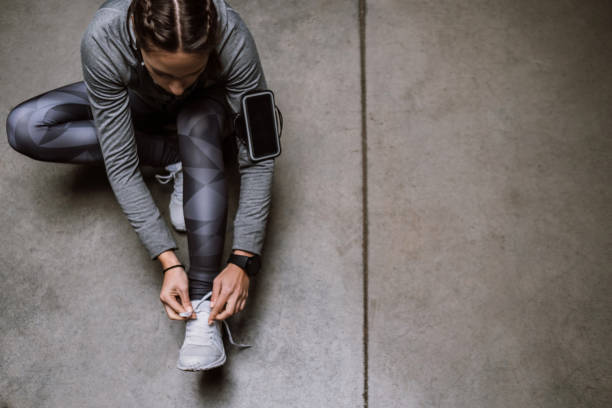Ok, so you are about to go for a run, but you’re stuck thinking: I don’t know what to wear running.. Will I be too hot in this? Too cold in that? I hear ya.
When I first started training for my first half marathon, it was the hottest point in the summer. It was hot, very hot. On top of that, many days were dry and humid, with the occasional rainy day.
Fast forward to today, and it is currently 20 degrees in Massachusetts and I am in the middle of my marathon training. It is absolutely freezing outside, and there is even snow on the ground.
So, I have been running consistently, doing lengthy runs in every single type of weather. I struggled for a while to figure out what to wear running, but I think I am experienced enough now to share some solid answers and help you get geared up to optimize your runs.
Whether you’re just starting out or looking to level up your running game, choosing the right gear can be a game-changer.
So, let’s get into how you can dress smart for any weather, helping you stay comfy, protected, and ready to stride forward.
What to Wear for Running in Hot Weather (70°F+)
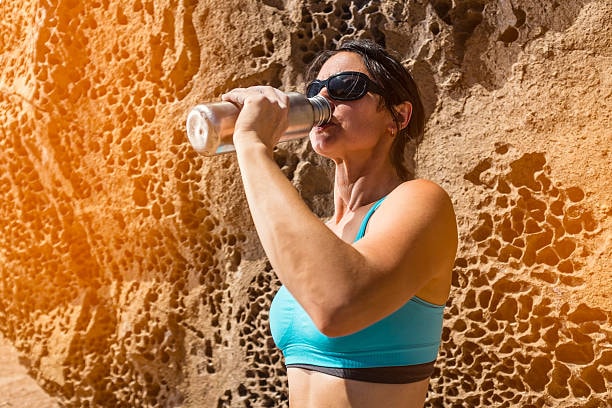
This is the type of weather that can get dangerous if you aren’t careful. For me, it was some of the hardest running I ever did, especially during longer runs that go for longer than an hour.
When it’s hot outside, keeping cool is the key to a comfortable run. Beat the heat with the right clothing that helps you stay cool and dry. Also, make sure you are extra focused on hydration during these runs!
- Top Base Layer: Choose a moisture-wicking tank top or a short-sleeved breathable shirt. For males, you may just choose to go shirtless. For women, a sports bra works too!
- Bottom Base Layer: Lightweight shorts or breathable running tights for those who prefer more coverage.
- Extra Layers: Generally unnecessary in this heat, but consider a light moisture-wicking hat for sun protection.
- Accessories: Sunglasses and a breathable cap to shield your eyes and face.
- Example Outfits: A bright, airy tank top paired with your favorite shorts and a running hat. Tights work too!
- Extra Tips: Opt for light colors to reflect the sun’s rays and apply sunscreen to exposed skin.
What to Wear for Running in Mild Weather (60-70°F)
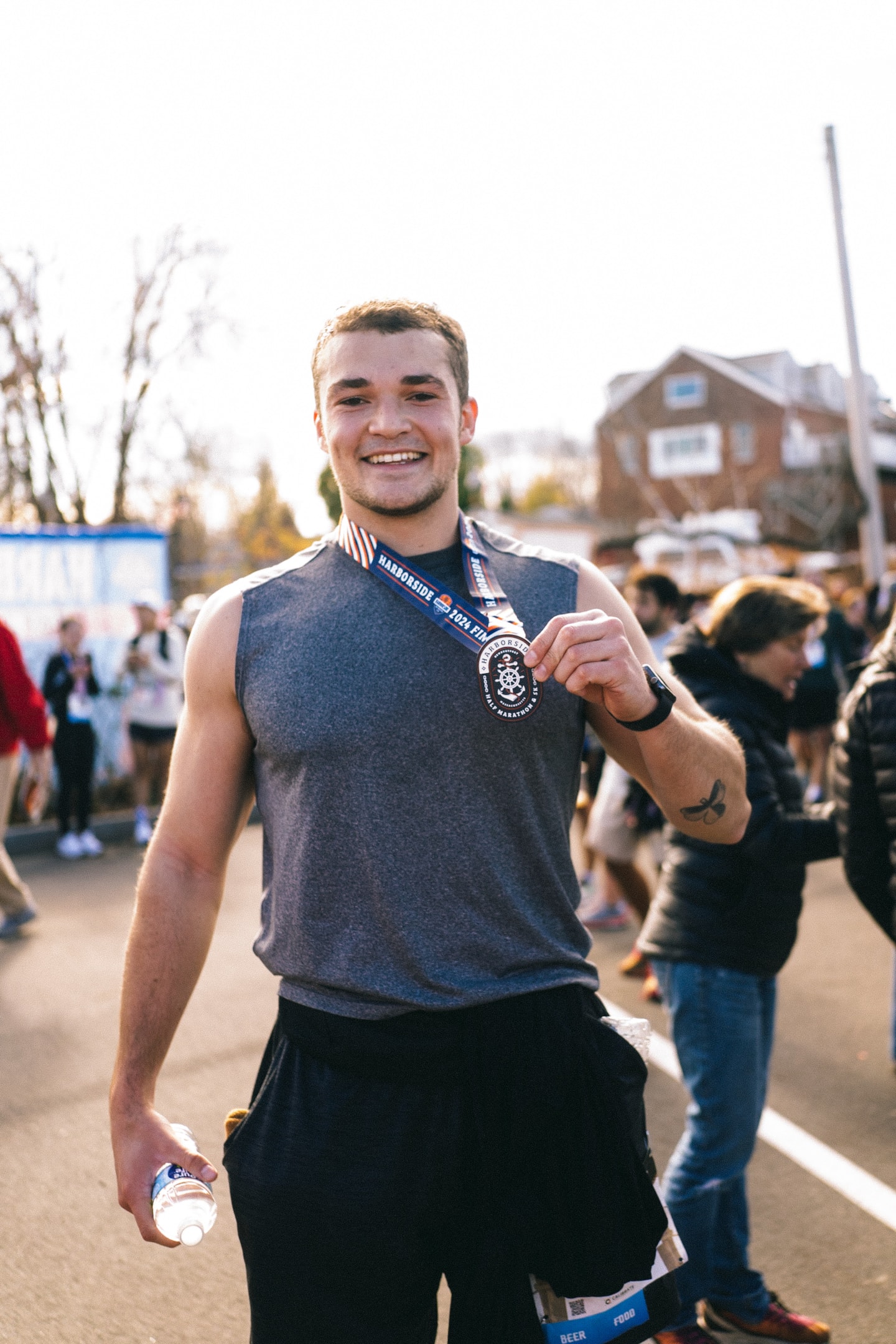
These are some of the most ideal conditions where you can truly enjoy the breeze without shivering or sweating too much.
Don’t get me wrong, if you run long enough, you will sweat a lot, but this weather is pretty ideal for most people. It’s perfect for most runners because it’s a solid balance between being not too hot and not too cold.
- Top Base Layer: A light long sleeve shirt that provides coverage without overheating.
- Bottom Base Layer: Shorts or light running tights, based on personal preference.
- Extra Layers: A thin vest or zip-up jacket might be needed early in the morning or late in the evening, but usually you won’t need anything extra.
- Accessories: Maybe a light hat if it leans towards the cooler side of this range.
- Example Outfits: Long sleeve breathable top with shorts or tights, depending on how much warmth you need.
What to Wear for Running in Cool Weather (50-60°F)
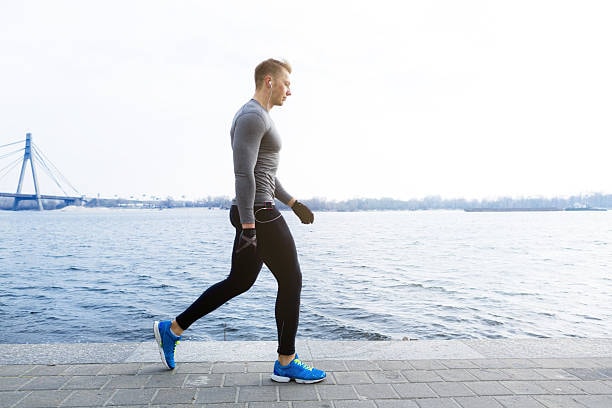
This is the fall running weather that is still pretty ideal for most people. A little crisp, but perfect for breaking out some of your cooler weather gear. As the temperature dips, it’s time to add a few layers to keep comfortable.
- Top Base Layer: A sweat-wicking long sleeve shirt to keep you dry.
- Bottom Base Layer: Longer tights or pants that offer full coverage.
- Extra Layers: Consider a lightweight running jacket or a snug vest.
- Accessories: Light gloves and a beanie might be the perfect addition.
- Example Outfits: A snug long sleeve top with running tights and a vest. I like to wear leggings under shorts, with a long sleeve shirt.
- Extra Tips: Choose a jacket with zippers at the pits for ventilation if you tend to heat up as you run.
Dressing for Chilly Weather (40-50°F)

Now we’re starting to get chilly. Many from the Northeast can relate to me when I say I have ran many times in this temp. When it gets below 50, it’s time to bundle up a bit more as the chilly weather sets in.
Layering becomes essential to adjust to your body temperature as you run. Remember though, that you will warm up pretty quickly into the run, so don’t pack on too much, or else it will hurt you later.
- Top Base Layer: Start with a thicker long sleeve base layer that’s designed for cold weather.
- Bottom Base Layer: Thicker tights or fleece-lined running pants.
- Extra Layers: A thermal jacket that shields against the wind.
- Accessories: Thermal gloves, a warm hat, and maybe a neck gaiter for extra warmth.
- Example Outfits: Layer your thermal wear under a protective jacket, pairing it with warm, moisture-wicking socks. I usually just go for a tight long sleeve undershirt, leggings, shorts, and a winter hat that comes off halfway through. I’m also used to this weather, so prepare for how you feel.
- Extra Tips: Make sure the outermost layer is easy to remove and tie around your waist if needed.
Preparing for Cold Days (30-40°F)
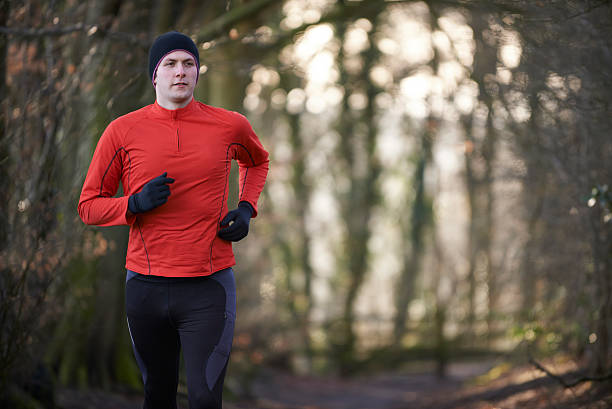
Now this sounds like home. Not in the nice way, but the cold way. In this type of weather, you feel the bite of the cold, so your gear needs to protect you effectively.
Cold weather running demands gear that keeps you insulated and dry. This is the land of the gloves and hats, trust me! When I train in this weather without gloves, I can’t even feel my hands, which is not what you want to be thinking about mid-run.
- Top Base Layer: A thermal long sleeve shirt that can handle moisture without chilling you.
- Bottom Base Layer: Insulated running tights.
- Extra Layers: Add a thick, insulated running vest or a jacket.
- Accessories: Don’t forget your thick gloves, a fleece hat, and a scarf.
- Example Outfits: A fleece-lined shirt under a windproof jacket, with insulated tights.
- Extra Tips: Consider a breathable but waterproof jacket if rain or snow is expected.
Extreme Cold Running Gear (Below 30°F)
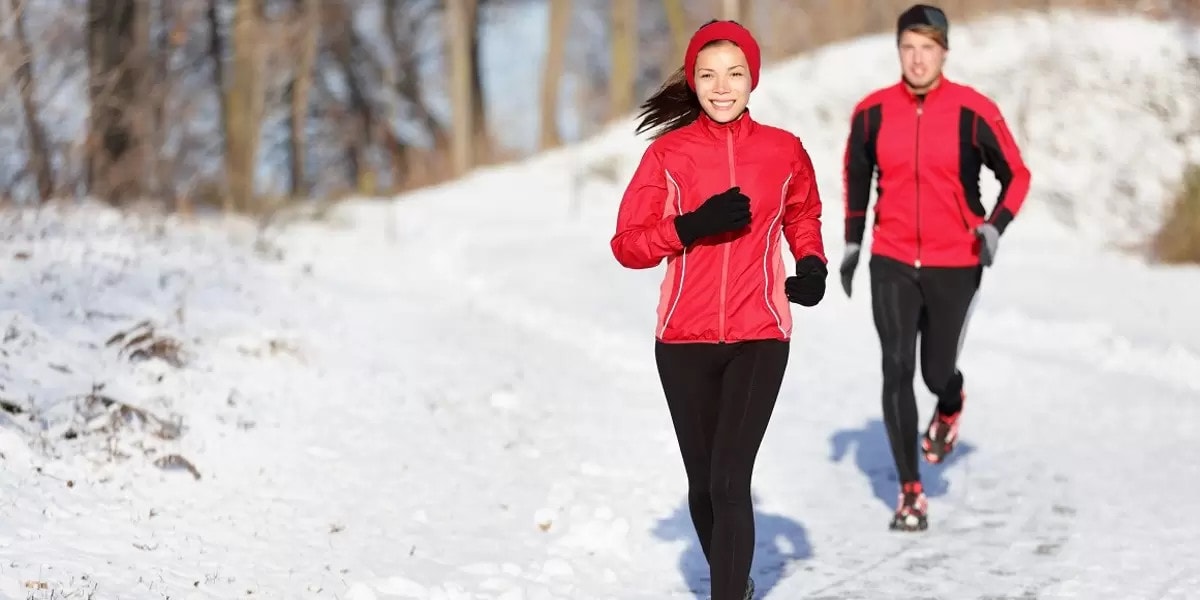
Now I am talking only to the brave souls running in the freezing cold. You guys (or girls, of course), your outfit must be strong and layered. These extreme conditions require extreme measures. Layer up with the warmest gear. This is dangerous territory if you don’t layer up properly.
- Top Base Layer: Heavy-duty thermal or wool layers to start.
- Bottom Base Layer: Thermal tights or double-layered pants.
- Extra Layers: An insulated winter running jacket is essential.
- Accessories: Thermal headgear to keep your head and ears warm, a ski mask for the face, and snow gloves to keep your hands warm.
- Example Outfits: Consider layering two thermal tops under an insulated jacket, with two layers of pants if necessary. Top that off with gloves and a hat because otherwise you will struggle to stay warm and not think about how cold you are…
- Extra Tips: Cover all exposed skin to protect from frostbite in freezing temperatures.
Running in the Rain
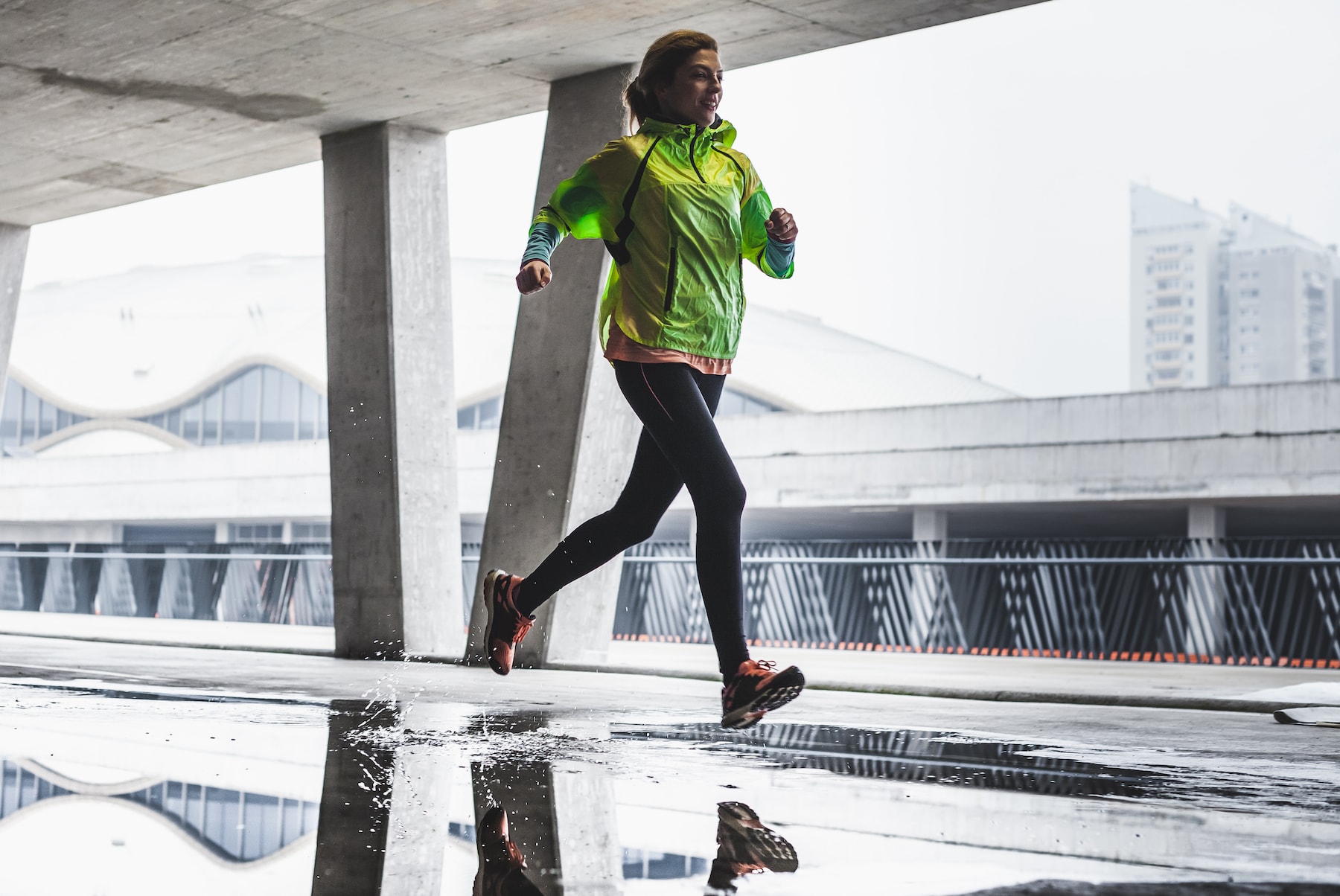
Sometimes running in the rain can be refreshing, but sometimes you have a run scheduled and all the sudden it’s raining…not so fun. That being said, the rain requires some extra steps to stay safe and comfortable.
- Choose the Right Gear: Wear a water-resistant or waterproof jacket to keep the rain soaking through to your skin. Opt for gear with reflective elements to enhance visibility, especially on cloudy days.
- Protect Your Feet: Water-resistant running shoes and moisture-wicking socks can help keep your feet drier, which prevents blisters and discomfort.
- Cap and Visor: A running hat with a brim can shield your eyes from rain, helping maintain clear vision.
- Adjust Your Pace: Slippery conditions mean it’s wise to slow down to avoid falls. Be cautious of puddles and slick surfaces.
- Dry Off Quickly: Once your run is complete, change out of wet clothes and shoes as soon as possible to avoid getting chilled.
Advanced Tips and Advice for What to Wear Running

Understanding Your Body’s Response to Temperature in the Cold & Heat
When engaging in activities like running, it’s crucial to understand how your body reacts to varying temperatures, ensuring your comfort and safety. Here’s how to manage your response in both cold and hot conditions effectively.
Reacting to Cold
- Layer Appropriately: Begin with a moisture-wicking base layer, add insulating layers such as a long sleeve shirt or running vest, and top with a weather-resistant jacket. That being said, you’ll feel colder at the beginning, so keep that in mind.
- Monitor Extremities: Keep your ears warm with a hat and wear gloves to protect fingers—these parts cool down the fastest.
- Shivering as a Signal: If you start to shiver, it’s your body’s way of saying it needs more warmth. Consider picking up the pace to generate heat or adding extra layers.
Adjusting to Heat
- Stay Hydrated: Increase fluid intake to help with sweat and cooling down. Wearing light-colored, sweat-wicking clothing will also aid in this process.
- Light and Airy Gear: Choose garments like tank tops or wear shorts that allow your skin to breathe and sweat to evaporate.
- Watch for Overheating: Signs of heat exhaustion include dizziness and nausea. Slow down and find a cooler spot if symptoms appear.
Choosing the Right Gear for the Weather

Here’s how to make sure you’re well-prepared for the weather ahead.
- Stay Updated on the Weather: Always check the current weather and the day’s forecast before heading out. This includes the temperature, wind chill factor, and likelihood of rain soaking through your gear.
- Prepare for Wind Chill: Use wind-resistant clothing to keep warm as the temperature drops. Items like a running jacket or a winter hat can prevent wind from pulling heat away from your body.
- Adapt to Changes: Have additional layers accessible, so you can quickly adapt to changing weather conditions. You’ll feel warmer than the actual temperature would make you think. This could mean adding a fleece-lined vest or stripping down to a base layer.
Maintaining Your Running Gear
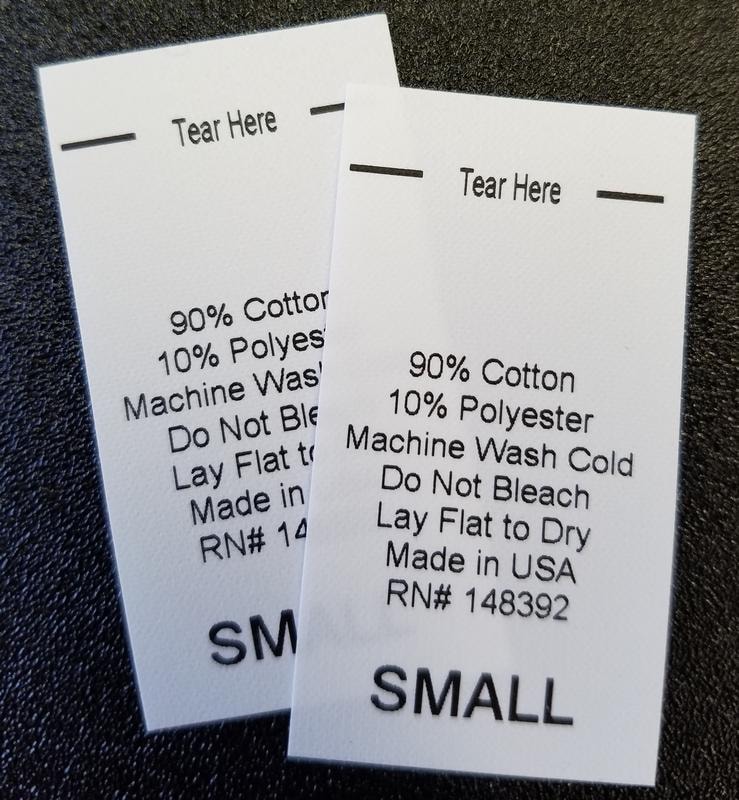
Good maintenance of your running gear extends its life and ensures it keeps you warm and dry on cold days. Here’s what to keep in mind:
- Care Instructions: Always follow the care tags on your clothing, especially when dealing with technical materials like sweat-wicking fabrics or insulated winter running gear.
- Avoid Fabric Softeners: These can impair the moisture-wicking capabilities of your gear, leaving you damp and cold. Instead, opt for detergents designed for sportswear.
- Opt for Air Drying: Let your gear air dry instead of using a dryer, as heat can compromise the integrity of performance fabrics.
- Inspect Gear Regularly: Check for signs of wear such as small tears or seams coming undone. Repair or replace gear as needed to avoid surprises on long runs.
These strategies will help you dress appropriately for any running conditions—keeping you warm, dry, and comfortable, whether you’re on a casual jog or deep into marathon training. Always remember, the right layers and proper care of your gear can make a significant difference in your running experience, particularly in cold weather.
FAQs

How many layers should I wear in cold weather?
Start with a base layer, add an insulating layer, and top with a protective outer layer. Adjust your cold weather gear based on how cold you feel during the run.
What’s the best material for running clothes?
Look for synthetic fibers like polyester for base layers because they excel at sweat-wicking. For cold weather, merino wool is excellent for insulation while still being breathable.
Can I just wear a heavy coat for cold weather running?
Heavy coats are bulky and restrict movement. It’s better to layer specific running gear to balance warmth and mobility.

